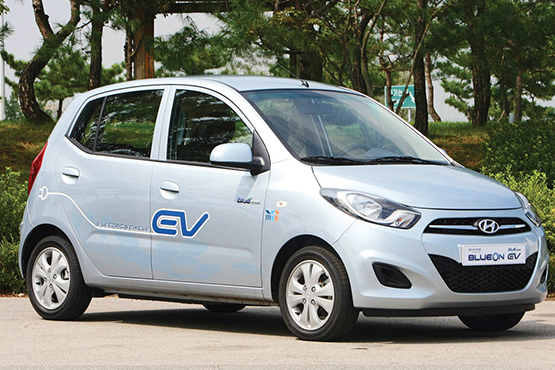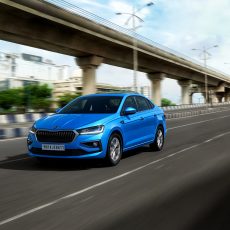 The race to develop alternative energy sources for vehicles has never been hotter. Right at the forefront is electric propulsion, although most pundits are of the opinion that hydrogen is actually the way to go. From small city EVs to sporty supercars, electric is changing the rules of the automotive game.
The race to develop alternative energy sources for vehicles has never been hotter. Right at the forefront is electric propulsion, although most pundits are of the opinion that hydrogen is actually the way to go. From small city EVs to sporty supercars, electric is changing the rules of the automotive game.
 Hyundai’s sub-brand, Blue Drive, is part of this change. Under this ambitious banner, the Korean company first displayed an electric version of their popular i10 hatchback, called the BlueOn electric vehicle (EV), and the Sonata
Hyundai’s sub-brand, Blue Drive, is part of this change. Under this ambitious banner, the Korean company first displayed an electric version of their popular i10 hatchback, called the BlueOn electric vehicle (EV), and the Sonata
hybrid electric vehicle (HEV) at the 2011 Frankfurt Motor Show. They’re quite serious about it, having invested more
than US $34 million in just the development of the BlueOn at Hyundai’s R&D centre in Namyang, South Korea.
Hyundai say that the name is derived from Blue and On, with the word ‘Blue’ standing for Hyundai’s Blue Drive strategy, which encompasses environment-friendly vehicle technologies, and ‘On’ standing for ‘switch on’.
 The upshot is an innocuous-looking i10 with significant green credentials, thanks to the electric propulsion under the hood. Powered by a 16.4-kWh LiPoly (lithium-ion polymer) battery, the BlueOn is good enough for 81 PS (61 kW) of peak power and maximum torque of 210 Nm (21.4 kg/m). That is enough to endow the little hatch with a top speed of
The upshot is an innocuous-looking i10 with significant green credentials, thanks to the electric propulsion under the hood. Powered by a 16.4-kWh LiPoly (lithium-ion polymer) battery, the BlueOn is good enough for 81 PS (61 kW) of peak power and maximum torque of 210 Nm (21.4 kg/m). That is enough to endow the little hatch with a top speed of
130 km/h and a 0-100 km/h timing of 13.1 seconds. Even more significant is the range of 140 kilometres on a single sixhour charge, via either 220 V household power or 380 V industrial-strength power. The quick charge method sees the battery recharged to about 80 per cent of its capacity within 25 minutes. The LiPoly battery also offers other advantages over other battery types, such as nickelmetal hydride batteries (NiMH), including delivery of the same power with 30 per cent less weight and 40 per cent less volume; boosting efficiency by 15 per cent and leaving more interior space for passengers.
The BlueOn also features a large number of other advanced components, including a motor-driven power steering
and electronic brake oil pressure amplifier. They both help to improve the battery efficiency, according to Hyundai.
 Another interesting feature is a Virtual Engine Sound System (VESS). The system is used to create an artificial sound for the safety of pedestrians to hear the quietlyrunning BlueOn electric-car when running at low speeds. There’s also a thoughtful telematics system to help drivers find the nearest charging station in the area.
Another interesting feature is a Virtual Engine Sound System (VESS). The system is used to create an artificial sound for the safety of pedestrians to hear the quietlyrunning BlueOn electric-car when running at low speeds. There’s also a thoughtful telematics system to help drivers find the nearest charging station in the area.
Unfortunately, you can’t own one yet. Instead, Hyundai supplied the Korean government with a fleet of BlueOn vehicles, providing an opportunity to develop and test the charging infrastructure before making a decision on
mass production. Once this is over, they plan to manufacture 2,500 units initially, which will be leased and sold in the South Korean market before a BlueOn makes its way to foreign shores. We, in India, might just have to wait a little longer.
Story: Saeed Akhtar




